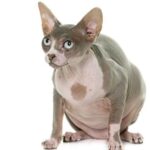
Understanding the benefits of probiotics will help you to provide what you want for your pet.
Brand Insights by Chr. Hansen
In the last decade, probiotics have become a popular topic of discussion. Probiotics are now labeled on foods and probiotic supplement sales have increased.
Pet owners are beginning to realize the importance of probiotics in the health of their pets. Probiotics are now more popular than ever, and people who take them are more likely to provide probiotics for their pets. In the USA 24% of pet parents say that they give probiotics to their pets, and 30% intend to give even more in the future. (CAWI interviews carried out in December 2021 by YOUGOV among 1000 dog and cats owners over 18 years old).
Hansen has been providing starter cultures and other beneficial microorganisms to the food industry for almost 150 years. Hansen has been providing starter cultures and beneficial microorganisms for the food industry. We offer insights into probiotics in pet food, and examine how manufacturers can meet the growing demand for probiotic strains by selecting them for their specific benefits.
Understanding Probiotics
Probiotics are live microorganisms which, when fed to an animal in sufficient quantities, provide a benefit for its health. It is important to note that probiotics must be alive when consumed.
It is therefore important to know how probiotics are going to be used. Some microbes like bacilli are better at tolerating challenges in the environment, making them more suitable for certain applications as probiotics.
The microbes that live in the gut of animals are essential for digestion and general health. A microbiome is made up of trillions and trillions existing organisms in the digestive system. An animal with a sterile gut cannot survive. The diversity of organisms found in the intestines are extremely high. In fact, the colon has one of the highest concentrations of microbes anywhere on Earth.
The microorganisms can be divided into three main categories:
- Commensal Organisms are not harmful, but they do not offer significant benefits either.
- Infection and disease can be caused by potentially harmful organisms.
- Beneficial organisms which provide health benefits to host animals.
Strain Matters
You need to understand not only the species and genus of an organism, but also its strain in order to determine the potential benefits it may confer on an animal. The strain is just as important as the genus or species because it’s the unique benefits that the organism brings to your digestive tract.
Dogs are a good way to visualize this. All domesticated canines are of the same species. However, a Chihuahua differs greatly from a Great Dane. Different strains of bacteria can also behave differently. They can have different effects on an animal.
Chr. Hansen’s Probiotics for Pet Food Producers contain strains of bacteria that have been researched to support digestion, immune function, barrier function, and absorption. We have one of the largest commercial collections of bacteria in the world, with almost 40,000 strains. This allows us to find organisms which are effective and safe for specific purposes. Each of our pet products is a unique blend of strains that are not available anywhere else on the market.
Over time, the gut microbes developed strategies for survival and competed with each other to get resources. Some of these strategies may be beneficial to the host.
Probiotics have been proven to be beneficial in three categories of research: interactions with other microbes (including the host), interactions with food, and interactions with the host.
Interactions between microbes
Addition of probiotics can increase the diversity of bacteria in the digestive system. This is not only because they are directly added, but also that these probiotics may support the growth and development of other beneficial microorganisms. Several probiotic strains also secrete substances that prevent the growth of harmful bacteria. It is also important to mention that probiotic organisms can compete with harmful bacteria in the gut.
Interactions with the host
The digestive system is a tube which runs from the mouth through the body to the opening on the other side. In a practical sense, anything inside the tube is outside the body.
The digestive lining has the function of preventing things from entering the bloodstream. Tight junctions help maintain a barrier between the digestive system and the rest the body. If this barrier is broken, pathogens, their toxins, and other toxins may be able to leak through, causing systemic reactions, organ damage and even death. Some probiotics help to maintain the barrier function and prevent this leaky-gut phenomenon.
70% of the immune system of mammals is located in the intestine. It makes sense. Pets are constantly introducing potentially harmful bacteria into their digestive tracts by simply living their life. They go for walks, groom themselves or lick food that has fallen on the floor. The ability of a pet to respond quickly and completely to these challenges will keep it healthy and safe.
Animals that are exposed to emotional or physical stress as well as environmental stress and disease challenges will be better able maintain normalcy when using probiotic organisms. Probiotics support the body’s capability to detect potentially harmful organisms, and mount an appropriate immune response against them. Some probiotic strains interact with intestinal cells that send signals to your immune system. This results in antibodies being produced or immune cells like T-helper cell activation, which helps fight infections.
Probiotics can aid in digestion and interact with foods.
The digestive system of pets cannot break down food unless it has the correct combination of enzymes and microorganisms. Probiotic bacteria produce some of the enzymes essential for digestion.
Pet owners can be assured that their companions are getting the maximum nutritional benefit by incorporating certain probiotic strains in their pet food.
Final considerations
Manufacturers should consider the following factors when deciding which probiotic to include in a pet food:
- How stable are the strains once they have been packaged and shipped to the consumer. This is crucial to ensure that the product delivers what it promises (live microbes).
- What stage of life are you aiming for? What life-stage are you targeting? What are the benefits you would like to achieve?
- How can you best combine different strains? It is better to choose strains which work together in a complementary way in order to improve digestion and overall health than using a single strain, or multiple strains working in the same manner.




